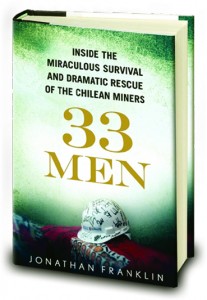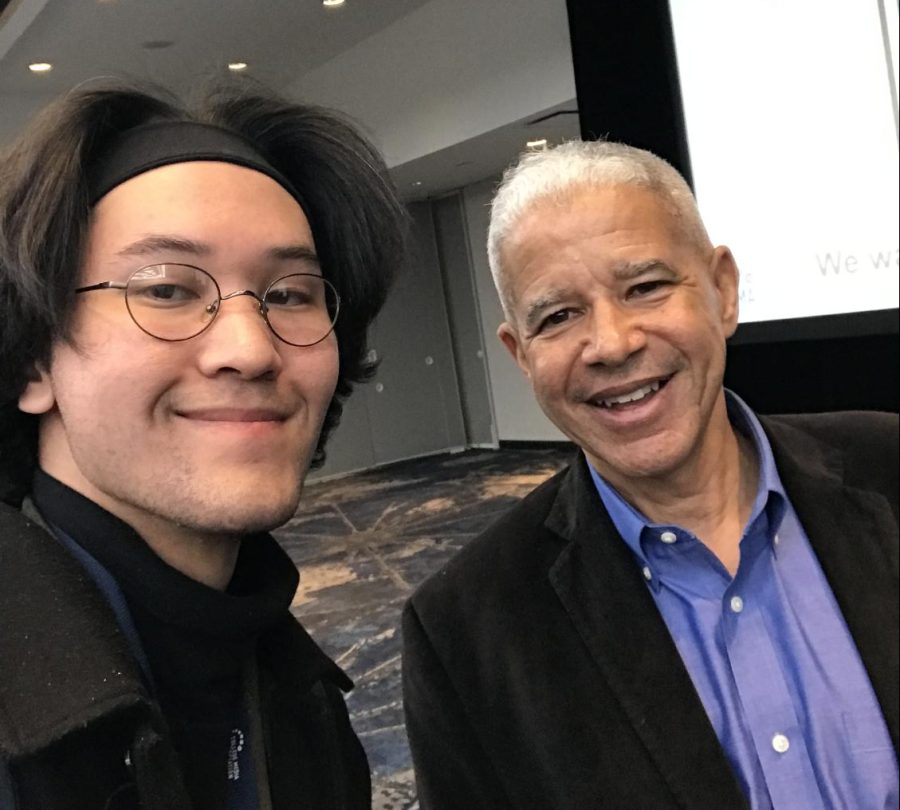
Award-winning journalist Jonathan Franklin delves into the lives of the 33 Chilean miners trapped in the San Jose mine in Chile’s Atacama Desert for ten weeks in his first book, “33 Men.”
Franklin tells the true story of the 2010 San Jose mining accident and the miners who became trapped underground—and survived—for the longest time on record. He puts together this story from numerous interviews and firsthand accounts of the goings-on inside and above the mine.
With his insider’s look, one that few journalists were privy to, he is able to create a nonfiction book that reads like a fiction story. The reader is allowed to live inside the mine with the survivors as well as on the surface with the family members, press, government, and rescuers who were all involved in the recovery of this unfortunate group of men.
The story is told from multiple points of view including miners, family members, political figures and rescue workers. Franklin created this story through interviews and by actually being present for much of the work that went on in rescuing these miners so he was able to tell this story from multiple views.
Through these different viewpoints, the reader is presented with a lot of bias, based on who’s telling what story. Since Franklin is only retelling true events, these biases leave the reader with a long list of questions for which the author cannot be blamed. Sadly, the story involves so much government and individual cover-up one may never know the true sequence of events.
As uncertainty begins to arise in them of the possibility of rescue, so does it arise in the reader. Even once contact is made from above, there is still so much drama and government upheaval that one cannot help but to wonder about the lives of these men, not only while they are trapped within the mine, but their lives that will follow after their rescue.
The most important aspect of this book though, is the hope and community that you see in every page. No matter how horrible the situation was for the miners or their families, they always seemed to find hope that help would arrive, and these seemingly random groups of people were able to come tighter to create a community of hope.
People around the world contributed to the efforts in Chile, and it illuminates the good in this world, despite all of the bad that seems to be currently surrounding it.
This book contains an illustration of the mountain and the mine’s tunnels that runs through it. It is also shown where exactly the men were trapped for their long stay underground. There is even a depiction comparing the depth of the mine with modern marvels such as the Statues of Liberty and the Empire State Building—neither building could stand up to the 2,300 foot depth where the men were trapped.
Another aspect that allows the reader to completely understand the world of the miners and the community this nearly tragic event created are real photos of the rescue efforts. “33 Men” offers pictures of miners, family members, and rescue workers, as well as political figures and general pictures of the mine. The reader no longer has to imagine the conditions that all these people were living under.
Franklin tries very hard to create an accurate portrayal of all the events that took place over those many weeks, and admits to his own inaccuracy when stating that with so many interviews compiled—and many people keeping silence—he had to do his best with dates and times and exact translation from some of his interviewees.
But “33 Men” is not about accuracy down to the last detail; it is about the emotions that the story the author is telling that arise within the reader. Franklin has taken a story that was heavily covered in the news and given it a completely new perspective. He has brought the reader into the heart of this story, into the lives of all the people involved and how it directly affected them, for better or worse. From his book, one can see how tragedy and pressure can bring out the best in some and worse in others.
The miners’ plight allows the reader to raise the question, “What would I have done if faced with a similar situation?” Could one have been as brave and heroic as some of the men, miners and rescuers alike proved to be? Or would the reader have crumbled under the pressure and let their fellow man down like others did during the ordeal?
Not just anyone can sit down with someone who has been through such a harrowing incident, and have them open up about their hopes, fears, and some of their darkest and most embarrassing secrets. In “33 Men,” Franklin is able to do this with the many people he interviewed and put together this narrative.










